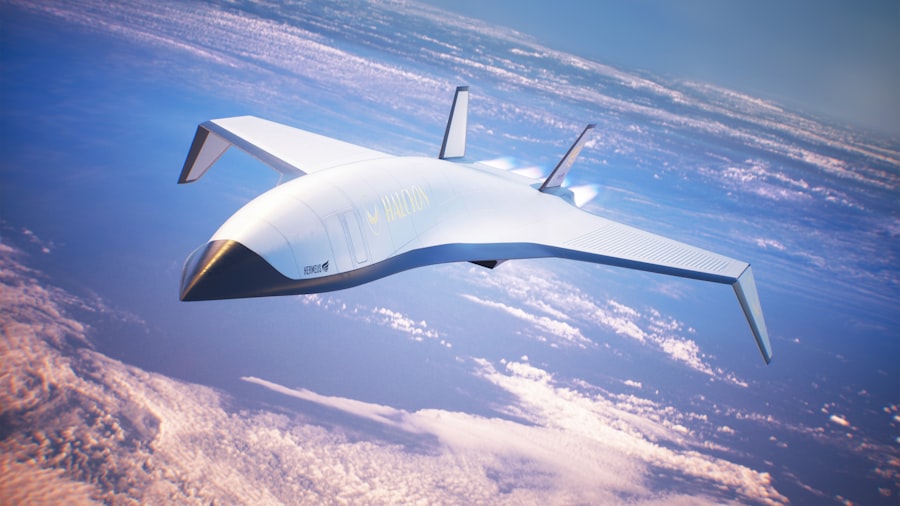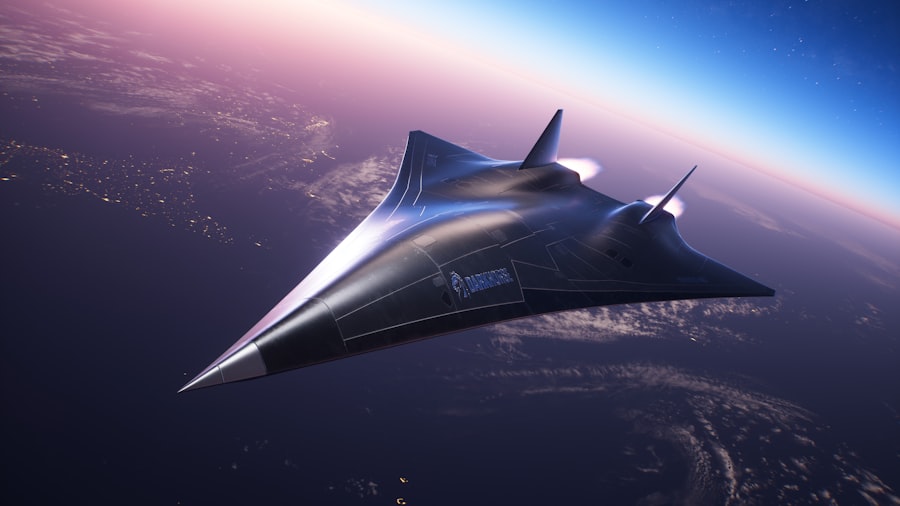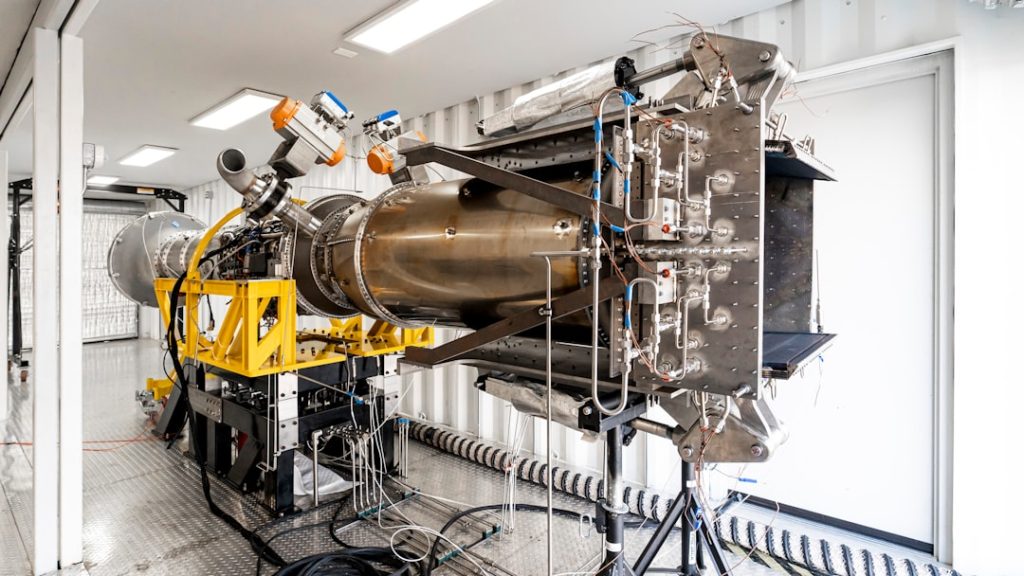Aerospace engineering is a multifaceted discipline that encompasses the design, development, testing, and production of aircraft, spacecraft, and related systems and equipment. This field is a confluence of various engineering principles, including mechanical, electrical, and materials engineering, and it plays a pivotal role in advancing technology in both aviation and space exploration. The significance of aerospace engineering has grown exponentially in recent years, driven by the increasing demand for more efficient air travel, the exploration of outer space, and the development of innovative technologies such as drones and satellite systems.
The evolution of aerospace engineering can be traced back to the early 20th century with the advent of powered flight. Since then, the field has expanded dramatically, incorporating advanced computational methods, materials science, and systems engineering. Today, aerospace engineers are tasked with addressing complex challenges such as reducing carbon emissions from aircraft, enhancing the safety and reliability of space missions, and developing autonomous systems for both air and space travel.
As the industry continues to evolve, the need for highly skilled professionals equipped with a robust educational foundation becomes increasingly critical.
Key Takeaways
- Aerospace engineering is a specialized field focused on the design and development of aircraft and spacecraft.
- Selection criteria for top universities include faculty expertise, research facilities, industry connections, and graduate outcomes.
- Leading universities for aerospace engineering are University of Michigan, MIT, Caltech, and Stanford.
- University of Michigan offers strong research programs and extensive industry partnerships.
- MIT, Caltech, and Stanford are renowned for cutting-edge research, innovation, and top-tier faculty in aerospace engineering.
Criteria for Selecting the Top Universities
When evaluating universities for aerospace engineering programs, several criteria come into play that can significantly influence a student’s educational experience and career prospects. One of the foremost considerations is the quality of faculty. Renowned professors who are actively engaged in research and have industry experience can provide invaluable insights and mentorship to students.
Their expertise often translates into cutting-edge curriculum development and access to state-of-the-art facilities. Another critical factor is the availability of research opportunities. Universities that offer hands-on experience through labs, internships, and collaborative projects with industry partners allow students to apply theoretical knowledge in practical settings.
This experiential learning is essential in aerospace engineering, where real-world applications often dictate the success of engineering solutions. Additionally, the university’s connections with aerospace companies can facilitate internships and job placements after graduation, making it an important aspect to consider. Accreditation is also a vital criterion; programs accredited by recognized bodies such as the Accreditation Board for Engineering and Technology (ABET) ensure that the education provided meets high standards of quality.
Furthermore, student support services, including career counseling, academic advising, and networking opportunities, can significantly enhance a student’s educational journey. Lastly, the university’s overall reputation in engineering disciplines can influence both the quality of education received and the value of the degree in the job market.
Top Universities for Aerospace Engineering

The landscape of aerospace engineering education is populated by several prestigious institutions known for their rigorous academic programs and innovative research initiatives. Among these universities, a few stand out due to their comprehensive curricula, distinguished faculty, and strong industry connections. These institutions not only provide students with a solid theoretical foundation but also immerse them in practical experiences that are crucial for success in the aerospace sector.
The selection of top universities is often influenced by various rankings that assess factors such as research output, faculty credentials, student satisfaction, and employment outcomes for graduates. Institutions like the University of Michigan, Massachusetts Institute of Technology (MIT), California Institute of Technology (Caltech), and Stanford University consistently rank among the best for aerospace engineering. Each of these universities offers unique strengths that cater to different aspects of aerospace education, making them attractive options for aspiring engineers.
University of Michigan
| Metric | Value |
|---|---|
| Established | 1817 |
| Location | Ann Arbor, Michigan, USA |
| Type | Public Research University |
| Student Enrollment | Approximately 48,000 |
| Undergraduate Enrollment | About 31,000 |
| Graduate Enrollment | About 17,000 |
| Faculty Members | Over 6,000 |
| Campus Size | 3,207 acres |
| Endowment | Over 12 billion |
| Academic Programs | Over 250 degree programs |
| Research Expenditure | Over 1.6 billion annually |
| Notable Rankings | Top 25 National Universities (U.S. News) |
The University of Michigan (U-M) boasts one of the most prestigious aerospace engineering programs in the United States. Located in Ann Arbor, U-M’s Department of Aerospace Engineering is renowned for its comprehensive curriculum that covers both aeronautics and astronautics. The program emphasizes a strong foundation in mathematics and physics while integrating advanced topics such as fluid dynamics, propulsion systems, and structural analysis.
Students benefit from a blend of theoretical coursework and hands-on laboratory experiences that prepare them for real-world challenges. One of the standout features of U-M’s aerospace program is its commitment to research. The university operates several research centers focused on various aspects of aerospace engineering, including the Michigan Aerospace Engineering Laboratory (MAEL) and the Center for Aeronautics and Space Exploration (CASE).
These centers provide students with opportunities to engage in cutting-edge research projects alongside faculty members who are leaders in their fields. Moreover, U-M’s strong ties with industry partners facilitate internships and co-op programs that enhance students’ practical skills and employability upon graduation.
Massachusetts Institute of Technology (MIT)
The Massachusetts Institute of Technology (MIT) is synonymous with innovation and excellence in engineering education. Its Department of Aeronautics and Astronautics (AeroAstro) is consistently ranked among the top aerospace engineering programs globally. MIT’s approach to aerospace education emphasizes interdisciplinary collaboration, allowing students to draw from various fields such as robotics, computer science, and materials science to solve complex engineering problems.
MIT’s curriculum is designed to challenge students intellectually while providing them with practical skills through hands-on projects. The university’s emphasis on research is evident in its numerous laboratories and research initiatives focused on areas like autonomous systems, space exploration technologies, and advanced propulsion methods. Students have access to state-of-the-art facilities such as wind tunnels and spacecraft design labs, enabling them to conduct experiments that push the boundaries of current aerospace technology.
Furthermore, MIT’s extensive network of alumni working in leading aerospace companies provides current students with valuable mentorship and career opportunities.
California Institute of Technology (Caltech)

The California Institute of Technology (Caltech) is another elite institution recognized for its rigorous aerospace engineering program. Caltech’s Department of Aerospace Engineering offers a unique blend of theoretical knowledge and practical application through its small class sizes and personalized instruction. The program focuses on fundamental principles while encouraging students to engage in innovative research projects that address real-world challenges in aeronautics and astronautics.
Caltech’s research initiatives are particularly noteworthy; the university collaborates closely with NASA’s Jet Propulsion Laboratory (JPL), providing students with unparalleled opportunities to work on groundbreaking space missions. This partnership allows students to contribute to projects involving planetary exploration, satellite technology, and robotic systems. The hands-on experience gained through these collaborations is invaluable for students aspiring to make significant contributions to the aerospace field.
Additionally, Caltech’s emphasis on interdisciplinary studies encourages students to explore connections between aerospace engineering and other scientific disciplines.
Stanford University
Stanford University is renowned for its cutting-edge research and innovative approach to education in various fields, including aerospace engineering. The university’s Department of Aeronautics and Astronautics offers a comprehensive program that prepares students for careers in both aviation and space exploration. Stanford’s curriculum emphasizes a strong foundation in engineering principles while also encouraging creativity and critical thinking.
One of Stanford’s distinguishing features is its focus on entrepreneurship within the aerospace sector. The university fosters an environment where students are encouraged to develop their ideas into viable business ventures through programs like Stanford’s StartX accelerator. This entrepreneurial spirit is complemented by access to Silicon Valley’s vast network of technology companies and startups, providing students with unique opportunities for internships and collaborations that can enhance their career trajectories.
Stanford also places a strong emphasis on research across various domains within aerospace engineering. Students have access to cutting-edge facilities such as wind tunnels and laboratories dedicated to propulsion systems and materials testing. Collaborative projects with industry partners further enrich the educational experience by allowing students to work on real-world challenges alongside experienced professionals.
The field of aerospace engineering continues to evolve rapidly, driven by technological advancements and increasing global demands for efficient air travel and space exploration. As such, selecting a top university for aerospace engineering is crucial for aspiring engineers who wish to make meaningful contributions to this dynamic field. Institutions like the University of Michigan, MIT, Caltech, and Stanford University not only provide rigorous academic programs but also foster an environment conducive to innovation and research.
These universities equip students with the necessary skills and knowledge to tackle complex challenges in aerospace engineering while offering invaluable networking opportunities within the industry. As future engineers embark on their careers in this exciting field, their educational experiences at these top institutions will undoubtedly play a significant role in shaping their professional journeys.




